Leucadendron argenteum
| Botanical Name | Leucadendron argenteum |
|||||||||||
| Family | Proteaceae - The Protea family
|
|||||||||||
| Pronunciation | loo-koe-DEN-dron ar-JEN-tee-um |
|||||||||||
| Common Name(s) |
English: Cape Silver Tree; Silver Tree
Afrikaans: Witteboom; Silwerboom
|
|||||||||||
| Plant Group |
|
|||||||||||
| Plant Size |
|
|||||||||||
| Position |
|
|||||||||||
| General Information |
|
|||||||||||
| Specific Information | Leucadendron argenteum can grow to 8 m in 10 years but seldom lives beyond 20 years. The leaves are silver-grey, caused by thousands of tiny, soft, silvery hairs on both leaf surfaces. In hot, dry weather they are intensely silver as the hairs lie flat to protect the leaves from drying out and when blown by the wind, make an impressive sight. Male and female flowers are carried on separate plants. Leucadendron argenteum needs a sunny position, with good air circulation, well-drained (sandy) soil, plenty of water, particularly in autumn-winter-spring and protection from frost. If you live in an area where you can grow this tree, do so - it will give you years of pleasure and be an instant hit with any visitors to your garden. Despite the many do's and don't in growing this species, it has adapted exceptionally well in my garden, being first planted some 40 years ago by my mother. It is completely water wise as my plants are situated far from any water source and has seeded freely. A present I have around forty self-seeded young plants that have come up during the past 18 months, following the death from old age of two trees. Rainfall is mostly in autumn and spring and my soil is of limestone origin, decidedly neutral to alkaline and often very dry. The area also has a good share of hot berg winds. Everything says they shouldn't grow here yet they are thriving. The Silver tree is classified as RARE (meaning that it has a small population and a restricted distribution range) and ENDANGERED (meaning that it faces a very high risk of extinction in the wild). It is currently threatened by urban expansion, afforestation, inappropriate fire management, alien plant invasion, habitat fragmentation and susceptibility to root fungal infections. |
|||||||||||
| Ad Break | ||||||||||||
| Flowers | ||||||||||||
| Description | florets in rounded heads |
|||||||||||
| Season |
|
|||||||||||
| Colour |
|
|||||||||||
| Growth Rate |
|
|||||||||||
| Plant Uses |
|
|||||||||||
| Distribution and Habitat | unique to the Cape Peninsula and Somerset West, in granite and shale fynbos on moist, south-facing slopes. |
|||||||||||
| Planting Suggestions | Choose a sunny, airy spot with well drained soil. Clear the site of weeds and dig in a good mix of well-matured compost. Make a hole large enough for the root ball of the plant. The young tree must be watered regularly during the first two years, particularly in autumn-winter-spring. Mulch to a depth of 50 mm to reduce weed weed activity, keep the soil moist and cool and feed the soil with nutrients. Never dig around the base or inside the drip line of the tree. Root-rot fungus, fatal to the tree, infects the plant via broken or damaged roots. Protect from frost. For detailed information go to http://www.plantzafrica.com The old method of digging a deep hole and filling it with soil and compost has resulted in many trees failing to thrive, dying, rotting at the base or worse still, falling over in later years due to poor root development. Refer to the following sites for the best method of planting trees: International Society of Arboriculture: New Tree Planting Tree People: Plant the right way For those of you who have a clay problem try: |
|||||||||||
| Medicinal Uses | The silver tree was much used for firewood on the Cape Peninsula in the 17th and 18th centuries. |
|||||||||||
| Ad Break | ||||||||||||


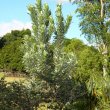
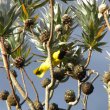

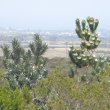
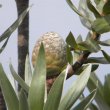
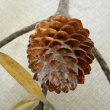
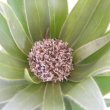
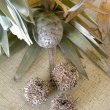

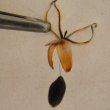



Comments
Transplanting leucadendron
Have a large healthy Jester. It' very much in the wrong place in the garden. Can you successfully transplant a leucadendron of this size? Any tricks. Thanks
Transplanting of Proteaceae
Hi Robert
Sorry Robert. No tricks and no transplanting. All of the Proteaceae family have, apart from underground roots, a wide network of tiny roots forming a mat, close to the surface of the soil. Disturbance of these or the underground roots, is likely to cause fungal growth, resulting in the death of the plant. I have previously tried transplanting some six month old Leucadendron argenteum. Of the six I transplanted, four died within a week, one lingered for 6 months before it died and the remaining plant survived but has remained small. Even if the plant evades the fungal growth, it is almost certain that a plant this size will die if disturbed.
Regards
Lorraine
Discuss this plant
Share knowledge, ask a question or give an experience.